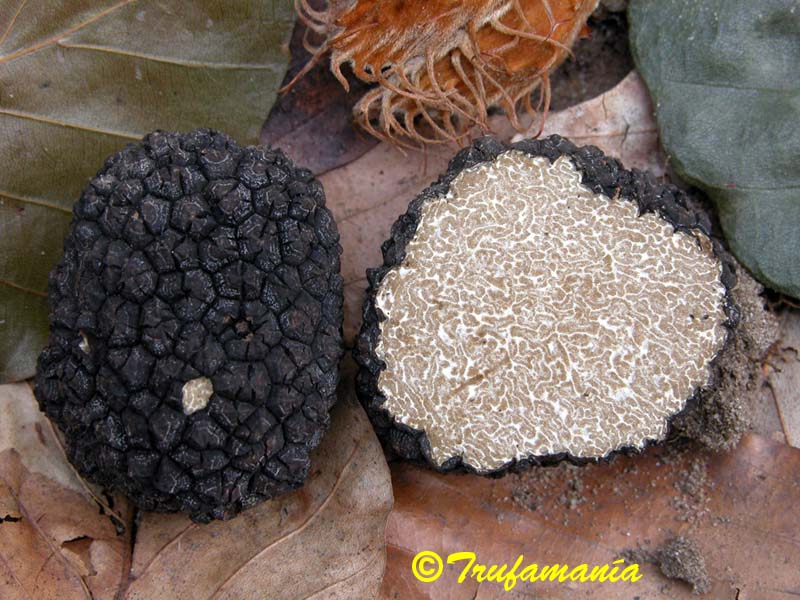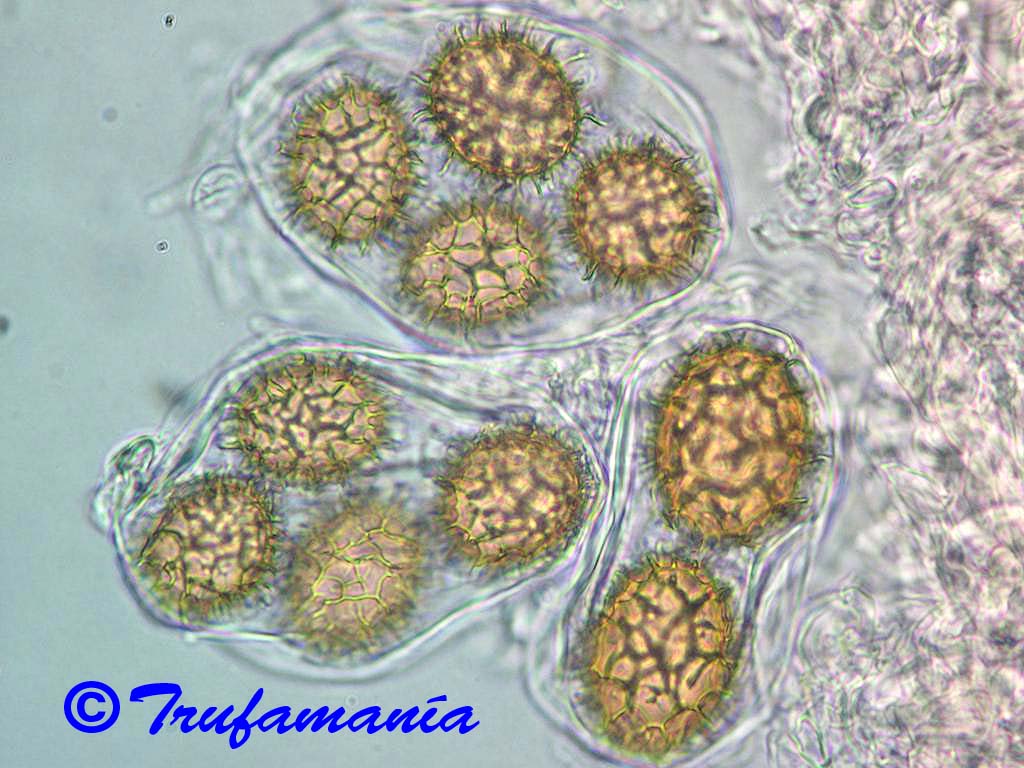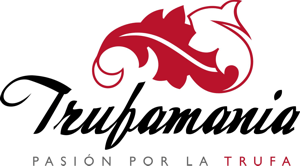TUBER AESTIVUM Vittadini forma UNCINATUM (Chatin) Montecchi & Borelli
in Montecchi & Sarasini (2000), Funghi Ipogei d' Europa 255, fig. 256

(Click on the picture to see more images)
Synonyms:
Tuber uncinatum Chatin, C. R. hebdom. Acad. Sciences 104: 1132 (1887); La truffe 55, t. 7 f. 1 a-e
Macroscopic characters:
Ascomata: hypogeous, subglobose, sometimes basal cavity, 2-9 cm, blackish-brown to black, conspicuously warted. Warts 3-9 mm across, usually smaller than those observed in Tuber aestivum, pyramidal, 4-6-sided, vertically fissured, sometimes whith transversal striation.
Gleba: firm, solid, white when immature, becoming dark brown at maturity, darker than Tuber aestivum gleba, marbled with numerous, thin, white, meandering, branching veins that do not change colour when exposed to the air.
Odour: of medium intensity, stronger than Tuber aestivum odour, different, sometimes phenolic and and unpleasant when very ripe.
Taste: of medium intensity, stronger than Tuber aestivum taste, nutty.
Habitat
Tuber uncinatum grows always in shady places (Tuber aestivum usually in sunny places). It is the most frequent edible truffle in Europe. Their period of ripeness is from October through January. Tuber uncinatum are associated with the roots of several trees: oaks (Quercus), beeches (Fagus sylvatica), poplars (Populus), hazels (Corylus), pines (Pinus) and lindens (Tilia).
Notes:
Molecular analysis showed no differences between Tuber aestivum and Tuber uncinatum. Differences in taste, odor and spore morphology are because of ecological factors.

(Click on the picture to see more images)
Microscopic characters:
Asci: globose to subglobose, sessile or short-stalked, 60-90 x 50-80 µm, (1-) 2-6 (-7)-spored (usually 3-4-spored).
Ascospores: 27-45 x 18-27 µm excluding ornament, size variable depending on number of spores in the ascus, Q range = 1,12-1,42, ellipsoid to subglobose, yellow, translucent, ornamented with a coarse irregular reticulum 3-5 (-9) µm high, sometimes bending at the top (presence of hooks in the spore reticulum), meshes variable, usually 3-5 across width of spore and often with incomplete secondary crests inside. These hooks are sometimes also present in Tuber aestivum ascospores, only means flexibility of reticulum walls and depends on reticulum height. Meshes are more regular than those observed in Tuber aestivum ascospores.
Peridium: pseudoparenchymatous
| Antonio Rodríguez trufamania@gmail.com antonio@trufamania.com |



